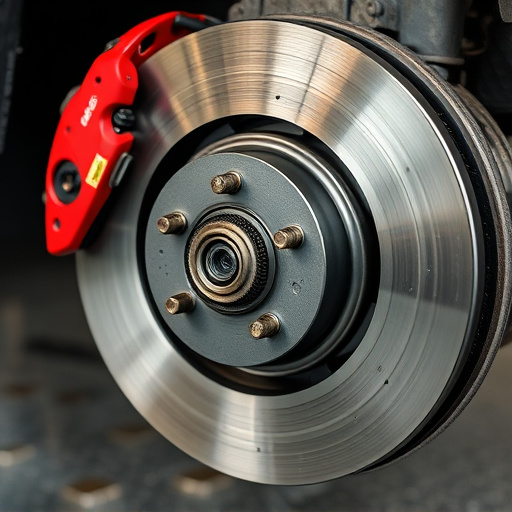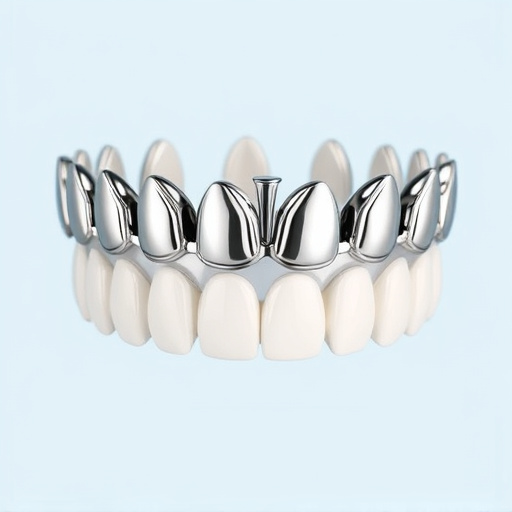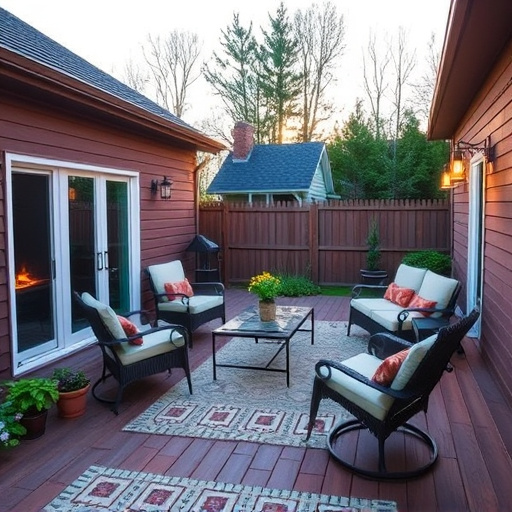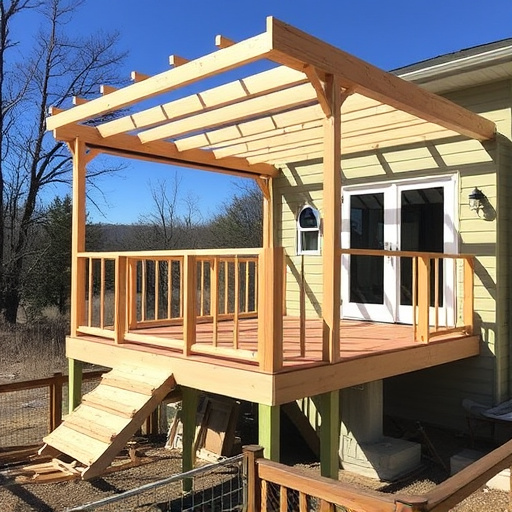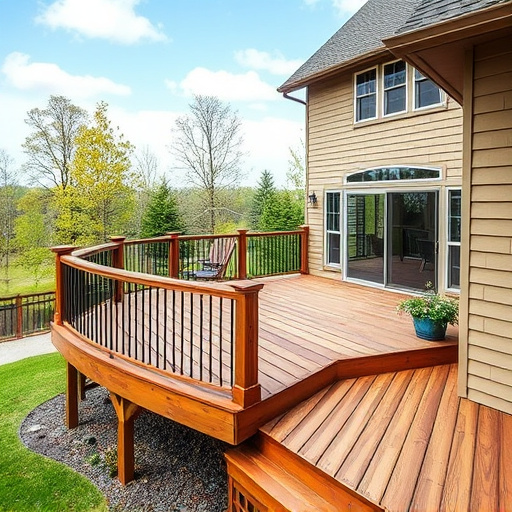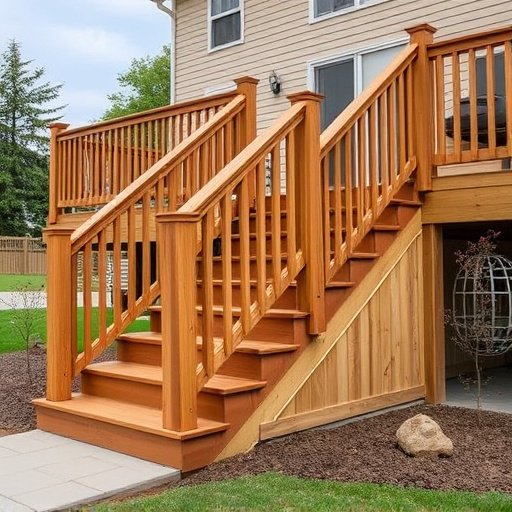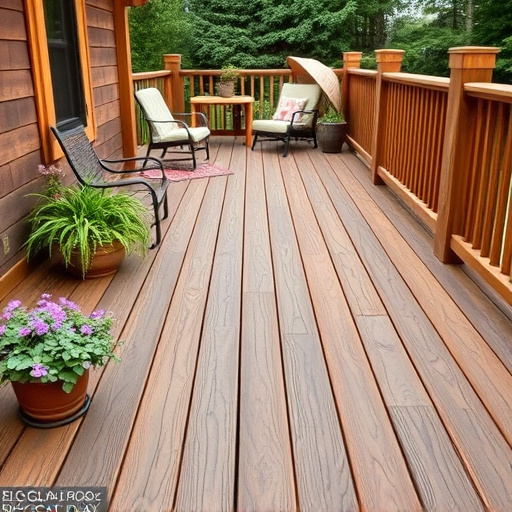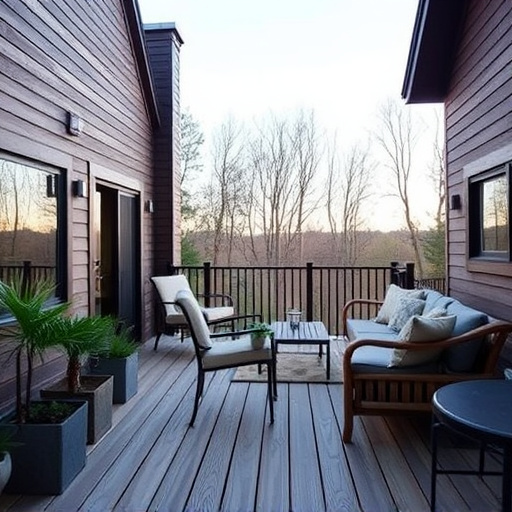Deck boards, whether traditional wooden or modern composite, are crucial for structural integrity and visual appeal in deck construction/renovation. Homeowners have diverse options based on durability, maintenance needs, and aesthetics, with natural, organic materials gaining popularity. Proper preparation, including level substructure, quality fasteners, and spacing, is key to long-lasting boards. Regular cleaning, sealing, and professional installation enhance durability and curb appeal, catering to growing demand for low-maintenance, eco-friendly options influenced by commercial trends.
“Elevate your outdoor living space with the latest trends in deck boards—a popular choice among homeowners. This comprehensive guide explores the world of deck boarding, offering insights into materials, design, and installation techniques. From enduring durability to aesthetic appeal, we uncover the secrets behind the rising popularity of specific board types. Learn how to navigate the market, make informed decisions, and install a long-lasting deck that becomes your outdoor oasis.”
- Understanding Deck Boards: Materials and Options
- Design Trends Shaping Homeowner Preferences
- Installation Tips for Long-Lasting Decks
Understanding Deck Boards: Materials and Options
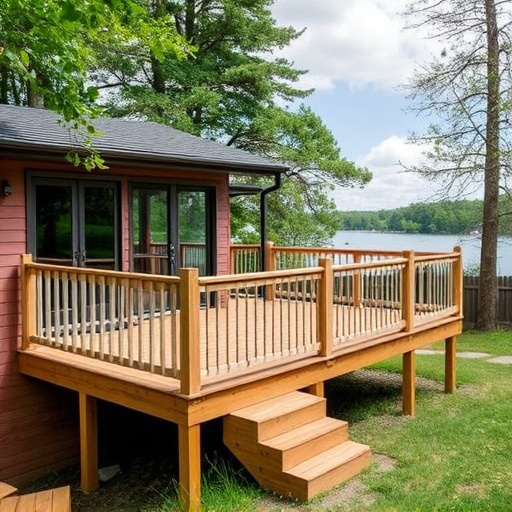
Deck boards are a fundamental component when constructing or renovating a deck, offering both structural support and aesthetic appeal. When it comes to materials, homeowners have a plethora of options to choose from. Traditional wooden boards remain popular for their natural beauty and versatility, available in various species like cedar, pressure-treated wood, or tropical hardwoods. These options cater to different budgets and preferences, with each possessing unique characteristics regarding durability, color retention, and maintenance requirements.
For those seeking low-maintenance alternatives, composite deck boards have emerged as a preferred choice. Made from a blend of plastic and wood fibers, these boards are resistant to rot, mold, and pests, eliminating the need for frequent siding repairs or roofing services. They also offer a wide range of colors and styles, allowing homeowners to create a unique look without compromising on durability. Whether it’s a traditional wooden deck or a modern composite design, understanding the available options ensures that homeowners can make an informed decision to enhance their outdoor living spaces.
Design Trends Shaping Homeowner Preferences
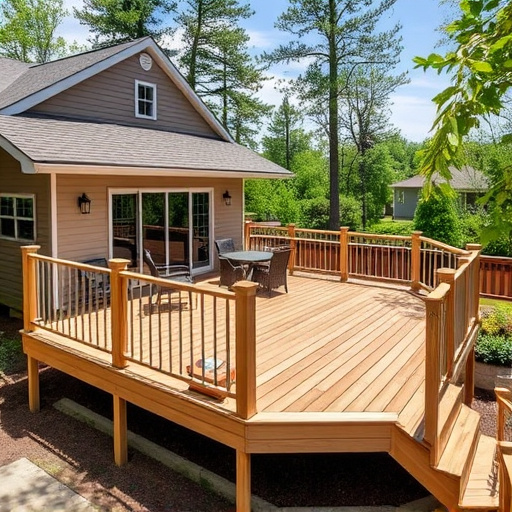
In recent years, design trends have significantly influenced homeowner preferences for deck boards. Modern aesthetics favor natural, organic materials that blend seamlessly with outdoor spaces, leading to a surge in demand for high-quality, low-maintenance deck board options. Homeowners are increasingly opting for attractive and durable materials such as composite and synthetic wood, which offer the look of real wood without the associated upkeep. These materials not only withstand harsh weather conditions but also resist rot, mold, and insects, making them a popular choice among those seeking long-lasting decking solutions.
Additionally, there’s a growing interest in eco-friendly decking options, with many homeowners conscious of the environmental impact of their choices. As a result, sustainable deck boards made from recycled materials or rapidly renewable resources have gained traction. These innovative roofing solutions not only contribute to a greener planet but also offer unique visual appeal, further shaping the preferences of discerning homeowners. Furthermore, commercial siding and roof replacement trends are also influencing residential choices, with many owners seeking seamless integration between their outdoor living spaces and the overall aesthetic of their properties.
Installation Tips for Long-Lasting Decks
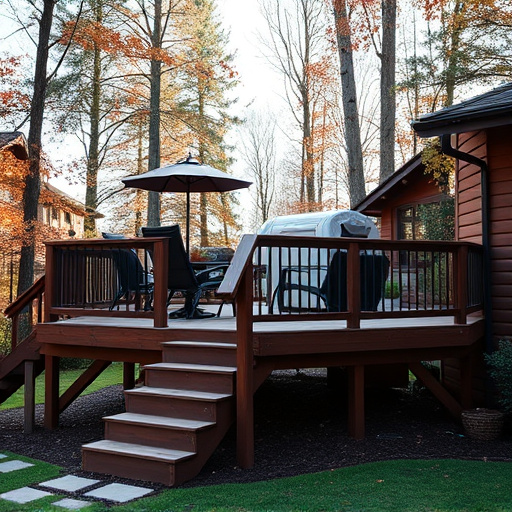
When installing deck boards, homeowners should prioritize proper preparation for long-lasting results. Start by ensuring a level substructure with no significant gaps or uneven surfaces. Use high-quality fasteners suitable for outdoor conditions, and consider pre-drilling holes to prevent wood splitting. Proper spacing between boards is crucial; follow manufacturer guidelines for the best air circulation and water drainage, which helps prevent rot and mold growth.
Regular cleaning and sealing are essential maintenance steps. Remove debris regularly using a soft brush or vacuum to keep the deck surface clean. Apply a water-repellent sealer once a year to protect against moisture absorption, extending the life of your deck boards. For commercial siding or roofing services that involve decking, professional installers can offer expert advice on suitable materials and techniques, ensuring durability alongside aesthetic appeal. Think about roofing and siding not just as protective layers but as integral components of your home’s exterior, enhancing curb appeal and property value.
Deck boards have evolved beyond traditional wood, with modern homeowners embracing diverse materials and innovative designs. As this article has explored, understanding the options available—from composite to tropical hardwoods—is key to making an informed choice that aligns with both aesthetics and durability expectations. By adopting trending styles like modern geometric patterns or natural, organic looks, property owners can create outdoor living spaces that are not only visually appealing but also built to last. Following expert installation tips ensures these decks stand the test of time, providing countless hours of enjoyment for years to come.


